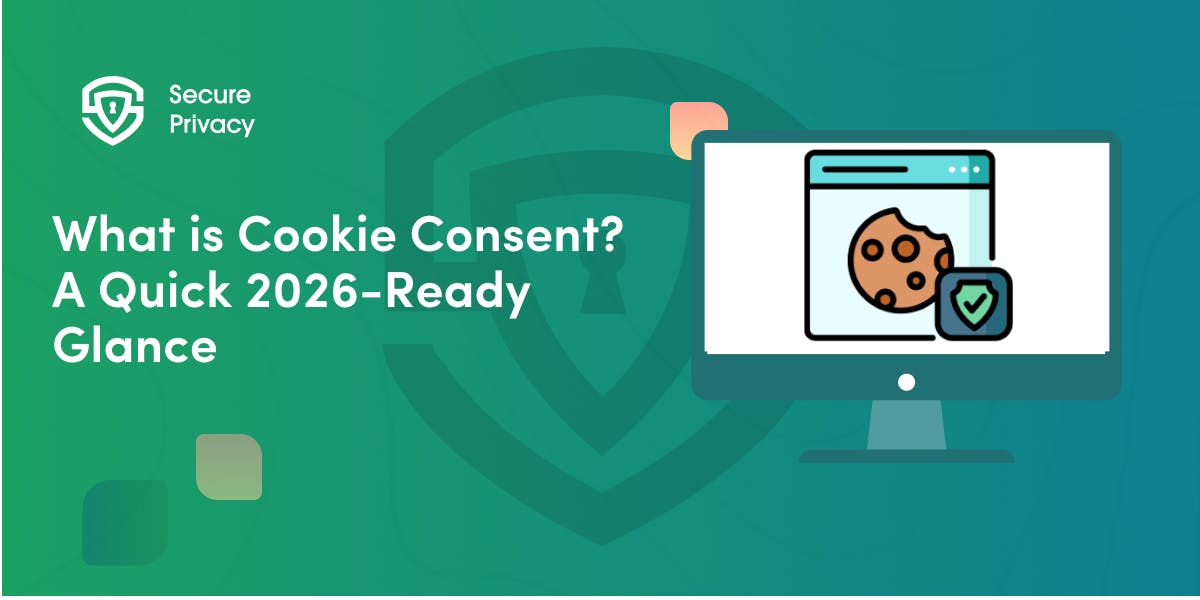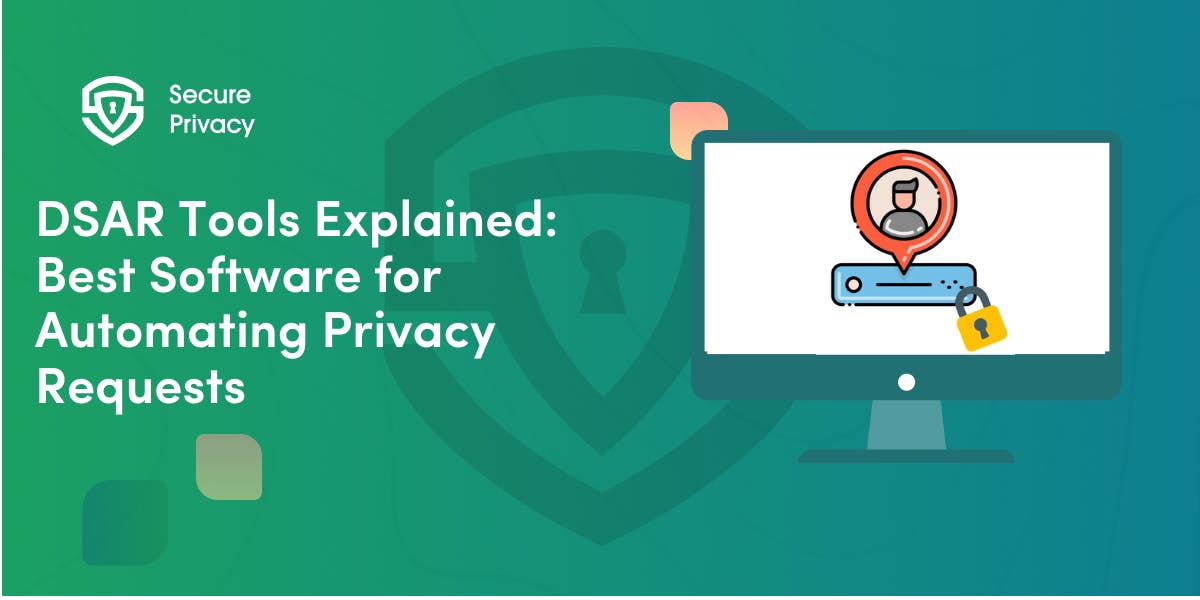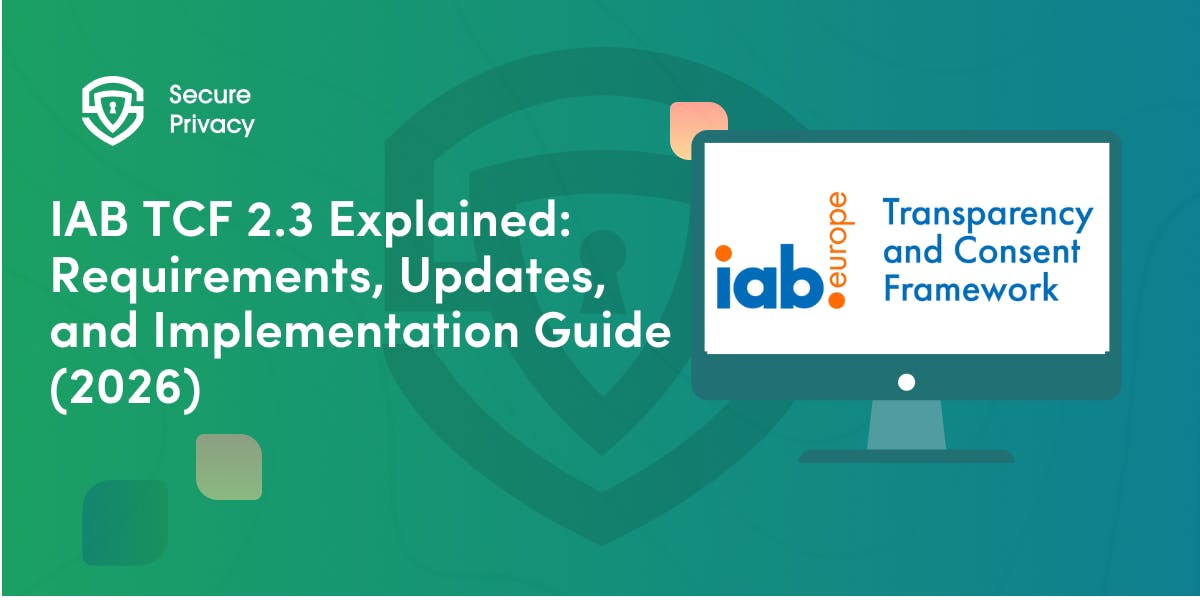Personalization Without Privacy Violations: Tactics & Tools for GDPR & CCPA Compliance
Your personalization strategy is a privacy violation waiting to happen. While customers demand tailored experiences, personalization privacy compliance has become the make-or-break factor that determines whether your customization efforts build trust or trigger devastating regulatory penalties.
In this comprehensive guide, you'll discover how to deliver exceptional personalized experiences while satisfying GDPR, CCPA, and emerging privacy regulations. We'll show you exactly how to implement privacy-safe personalization strategies that protect user rights while maintaining the conversion-driving customization your business depends on. Effective personalization privacy compliance requires systematic integration of privacy controls throughout your customization infrastructure.

Prioritizing user privacy is essential. Secure Privacy's free Privacy by Design Checklist helps you integrate privacy considerations into your development and data management processes.
The Personalization-Privacy Paradox
Modern consumers expect personalized experiences — 91% want brands to provide relevant offers and recommendations based on their preferences. Yet these same consumers are increasingly concerned about data privacy, with 86% expressing worry about how companies use their personal information.
This creates a fundamental tension for businesses: deliver the personalization that drives engagement and conversions while respecting privacy rights that carry fines up to €20 million under GDPR or $7,500 per violation under CCPA.
Personalization privacy compliance isn't about choosing between customization and privacy—it's about designing intelligent systems that achieve both objectives simultaneously. Organizations that master this balance gain competitive advantages through enhanced customer trust and sustainable personalization capabilities.
The regulatory landscape has fundamentally shifted the personalization game. Traditional approaches based on extensive behavioral tracking and cross-device profiling now require explicit consent, granular controls, and transparent explanation mechanisms that many businesses struggle to implement effectively. Modern personalization privacy compliance frameworks address these challenges through privacy-by-design principles.
Legal Foundation: What Privacy Laws Say About Personalization
GDPR Requirements for Personalization
GDPR-compliant personalization requires establishing clear lawful bases for data processing, with consent and legitimate interest being most relevant for customization activities. Article 6(1) mandates that consent must be "freely given, specific, informed and unambiguous," requiring granular consent mechanisms for different personalization purposes.
Article 22 GDPR creates significant restrictions on automated decision-making that produces legal or similarly significant effects. Personalization systems that automatically determine pricing, content access, or service availability may trigger these limitations, requiring human oversight and explanation mechanisms.
- Explicit consent for behavioral tracking and profiling
- Separate consent for different personalization purposes
- Right to explanation for automated decisions
- Data minimization in personalization algorithms
CCPA/CPRA Personalization Rules
CCPA personalization rules focus on transparency, opt-out rights, and data minimization rather than upfront consent. The California Privacy Rights Act introduces explicit data minimization requirements, mandating that businesses collect personal information only as "reasonably necessary and proportionate" to disclosed purposes.
CPRA's "sharing" definition includes cross-context behavioral advertising and data used for targeted recommendations, requiring clear opt-out mechanisms and automatic Global Privacy Control signal recognition.
Emerging Global Privacy Frameworks
Privacy regulations continue expanding globally, with over 75% of countries expected to have comprehensive privacy laws by 2025. These frameworks generally follow GDPR and CCPA principles while introducing jurisdiction-specific requirements that affect personalization strategies.
Brazil's LGPD, Canada's PIPEDA updates, and emerging U.S. state laws create additional compliance obligations for organizations operating internationally. Personalization privacy compliance strategies must accommodate multiple regulatory frameworks simultaneously while maintaining consistent user experiences across all jurisdictions.
Types of Personalization and Their Privacy Implications
Behavioral Tracking Personalization
Traditional behavioral tracking involves analyzing user actions across websites, devices, and time periods to build comprehensive profiles for personalization. This approach faces significant regulatory challenges under modern privacy laws.
Privacy Considerations: Requires explicit consent under GDPR for non-essential tracking, must provide clear opt-out mechanisms under CCPA, and cross-device tracking needs special consent for identifier linking.
Compliance Strategy: Implement consent-conditional tracking with granular controls, allowing users to choose specific behavioral personalization features while maintaining basic functionality for non-consenting users. Comprehensive personalization privacy compliance programs provide clear value exchanges for behavioral data collection.
Location-Based Personalization
Geographic personalization uses location data to customize content and offers based on user proximity. Location data receives enhanced protection under most privacy frameworks, often classified as sensitive information requiring ongoing consent management.
Privacy-Safe Approach: Use broad geographic targeting (city/region level) rather than precise coordinates, implement automatic data deletion, and provide clear controls for location-based personalization.
Predictive Personalization
Machine learning algorithms analyze patterns to predict user preferences and behavior. This sophisticated personalization often triggers automated decision-making restrictions and transparency requirements.
Compliance Framework: Document algorithmic logic, provide user-friendly explanations, implement human oversight for significant decisions, and enable user control over predictive personalization features. Advanced personalization privacy compliance systems integrate transparency requirements into machine learning workflows.
Email and Content Customization
Personalized email marketing and website content represent lower-risk personalization activities when implemented with proper consent and preference management systems.
Best Practices:
- Separate consent for content personalization and email marketing
- Granular preference centers for customization options
- Clear unsubscribe and preference modification mechanisms
- Regular consent renewal for ongoing personalization
Privacy-First Personalization Tactics
First-Party Data Foundation
Privacy-safe personalization starts with building robust first-party data strategies that rely on directly consented information rather than third-party tracking or inference. First-party data provides higher quality insights while ensuring clear consent chains and user control. Strategic personalization privacy compliance implementation prioritizes first-party data collection over third-party alternatives.
Data Collection Points:
- Account creation and onboarding flows
- Purchase and transaction data
- Survey responses and feedback submissions
- Preference center interactions and settings
Zero-Party Data Collection
Zero-party data represents information customers intentionally share with brands, offering the highest level of consent and user control. This approach aligns perfectly with privacy regulations while providing valuable personalization insights.
Effective Collection Methods:
- Interactive quizzes and assessment tools
- Preference surveys and style questionnaires
- Product recommendation engines with user input
- Gamified experiences that reward data sharing
Contextual Personalization
Contextual targeting analyzes current content and situations rather than historical user behavior, providing relevant personalization without extensive personal data collection or consent requirements.
Contextual Signals:
- Current page content and category
- Time of day and seasonal factors
- Geographic location (broad region)
- Device type and capabilities
Privacy Benefits: No personal data storage required, eliminates need for complex consent mechanisms, reduces regulatory compliance burden, and builds user trust through transparent targeting.
Preference-Driven Personalization
User-controlled preference systems enable personalization based on explicitly declared interests rather than inferred behavior. This approach maximizes user agency while providing clear personalization value.
Design Principles:
- Clear language explaining each personalization option
- Visual examples of how preferences affect experiences
- Mobile-responsive interface design
- Integration with broader privacy controls
Technology Stack for Compliant Personalization
Consent Management Platform Integration
Modern personalization privacy compliance requires sophisticated Consent Management Platforms that integrate seamlessly with personalization engines to ensure real-time consent enforcement across all customer touchpoints.
- Granular consent categories for different personalization types
- Real-time consent signal distribution to all systems
- Geographic compliance rules for multi-jurisdictional operations
- Integration APIs for personalization platforms
- Comprehensive audit trails for regulatory compliance
Personalization Integration:
- Automatic consent checking before personalization activation
- Consent-conditional content delivery and recommendations
- Real-time preference synchronization across channels
- Fallback experiences for non-consenting users
Effective personalization privacy compliance platforms provide seamless integration between consent management and personalization delivery systems.
Customer Data Platform Privacy Controls
Privacy-aware Customer Data Platforms provide the foundation for compliant personalization by implementing data governance, consent management, and user rights automation at the data layer.
Privacy-Enabled CDP Capabilities:
- Data lineage tracking for personalization algorithms
- Purpose limitation enforcement for different data uses
- Automated data retention and deletion workflows
- Consent signal integration with segmentation rules
- Privacy impact assessment tools for new personalization features
Implementation Requirements:
- Role-based access controls for personalization data
- Encryption and pseudonymization for sensitive information
- Cross-system consent propagation mechanisms
- Audit logging for all personalization activities
Privacy-Preserving Personalization Technologies
Emerging technologies enable sophisticated personalization while minimizing privacy risks through innovative approaches that process data without exposing individual information.
Federated Learning: Train personalization models on distributed data, keep sensitive information on user devices, enable collective learning without data centralization.
Differential Privacy: Add mathematical noise to personalization datasets, protect individual privacy while enabling algorithmic insights, support population-level personalization research.
On-Device Processing: Run personalization algorithms locally on user devices, eliminate need for data transmission to central servers, provide immediate personalization with complete user control.
Real-World Implementation Examples
E-Commerce Product Recommendations
Challenge: Provide relevant product recommendations while respecting user privacy and consent preferences.
Solution: Implement hybrid recommendation system combining contextual signals (current product category, price range) with user-declared preferences and consented behavioral data.
Results: Maintained 85% of recommendation effectiveness while achieving 95% consent opt-in rates through transparent value exchange. This case demonstrates how effective personalization privacy compliance can actually improve user engagement and business performance simultaneously.
SaaS Dashboard Personalization
Challenge: Customize software interfaces based on user roles without violating privacy regulations.
Solution: Role-based personalization using explicitly declared job functions and workspace preferences combined with anonymized usage patterns.
Implementation: Onboarding questionnaire for role and preference collection, privacy-preserving analytics for feature usage optimization, user-controlled dashboard customization options.
Content Publishing Personalization
Challenge: Deliver personalized content recommendations while maintaining reader privacy and regulatory compliance.
Solution: Contextual content recommendation engine supplemented by reader-declared interests and reading preferences.
Privacy-First Approach: Content category preferences instead of reading history tracking, contextual recommendations based on current article content, reader-controlled topic preferences.
Measuring Success While Protecting Privacy
Privacy-Compliant Analytics
Traditional personalization measurement relies heavily on individual user tracking that conflicts with privacy regulations. Privacy-compliant analytics approaches provide insights while protecting user rights. Modern personalization privacy compliance requires fundamentally different measurement approaches that respect user privacy while maintaining business intelligence capabilities.
Measurement Approaches:
- Cohort analysis instead of individual user tracking
- Statistical sampling for personalization effectiveness
- Privacy-preserving A/B testing methodologies
- Consent-aware reporting separating consenting and non-consenting users
Success Metrics for Privacy-First Personalization
User Trust Indicators: Consent opt-in rates for personalization features, preference center engagement frequency, privacy policy interaction metrics, customer satisfaction scores related to data handling.
Business Performance Metrics: Personalization effectiveness across consent segments, revenue impact of privacy-compliant personalization, customer lifetime value for privacy-conscious segments.
Compliance Effectiveness: Data subject rights request response times, privacy policy clarity and user comprehension, regulatory audit readiness and documentation quality.
How Secure Privacy Enables Compliant Personalization
Secure Privacy provides comprehensive solutions for personalization privacy compliance that seamlessly integrate personalization engines with robust privacy controls, ensuring businesses can deliver customized experiences while maintaining full regulatory compliance.
Advanced Consent Management:
- Granular consent categories specifically designed for personalization use cases
- Real-time consent signal distribution to all personalization systems
- Geographic compliance automation for multi-jurisdictional operations
- Personalization-aware consent optimization and user experience design
Privacy-Preserving Personalization Tools:
- Zero-party data collection platforms with engaging user experiences
- Preference center integration with personalization engines
- Contextual targeting tools that eliminate personal data requirements
- Privacy-preserving analytics and measurement capabilities
Our comprehensive personalization privacy compliance platform addresses every aspect of privacy-compliant customization from consent collection through performance measurement.
Regulatory Compliance Automation:
- Automated compliance monitoring across personalization systems
- Data subject rights automation for personalization data
- Privacy impact assessment tools for new personalization features
- Regulatory change monitoring and implementation guidance
Enterprise Integration:
- Seamless integration with major personalization platforms
- Customer data platform privacy control integration
- Marketing automation consent enforcement
- Cross-channel preference synchronization
Frequently Asked Questions
Q: Can you have effective personalization while maintaining personalization privacy compliance?
A: Yes, personalization privacy compliance actually enhances long-term personalization effectiveness by building user trust and encouraging voluntary data sharing. Privacy-first approaches often achieve 80-90% of traditional personalization performance while creating sustainable, trust-based customer relationships.
Q: What's the difference between GDPR-compliant personalization and CCPA personalization rules?
A: GDPR-compliant personalization emphasizes explicit consent and user control, while CCPA personalization rules focus on transparency and opt-out rights. GDPR requires upfront consent for behavioral tracking, while CCPA allows notice-based collection with clear opt-out mechanisms.
Q: How do you implement privacy-safe personalization without losing conversion rates?
A: Privacy-safe personalization maintains conversion rates through value-driven data exchanges, contextual targeting, and progressive profiling. Focus on first-party data collection, transparent value propositions, and user-controlled preference systems that encourage voluntary engagement.
Q: What tools are essential for personalization privacy compliance?
A: Essential tools for personalization privacy compliance include consent management platforms with personalization integration, privacy-aware customer data platforms, contextual targeting systems, and zero-party data collection tools that enable compliant customization.
Q: How do you measure personalization effectiveness while protecting privacy?
A: Measure personalization effectiveness through aggregate analytics, cohort analysis, and consent-aware reporting that separates performance metrics by user consent status. Focus on trust indicators like consent rates alongside traditional engagement and conversion metrics.
Q: What are the biggest risks in personalization privacy compliance?
A: The biggest risks include using behavioral tracking without proper consent, failing to provide granular personalization controls, not implementing data subject rights for personalization data, and using automated decision-making without transparency and human oversight mechanisms.
Q: Can contextual targeting replace behavioral personalization entirely?
A: Contextual targeting provides significant personalization value without privacy risks, but works best when combined with consented first-party data and user-declared preferences. The most effective privacy-safe personalization strategies use contextual signals as the foundation supplemented by voluntary user data.
Q: How often should personalization privacy compliance be reviewed and updated?
A: Personalization privacy compliance should be reviewed quarterly for system changes and annually for comprehensive compliance assessment. Major personalization feature launches require privacy impact assessments, and regulatory changes may necessitate immediate implementation updates.
Building Trust Through Transparent Personalization
Personalization privacy compliance represents a fundamental shift from extractive data practices to collaborative relationships where users actively participate in their personalized experience design. This approach builds stronger customer relationships while ensuring sustainable business growth.
The future of personalization lies not in choosing between customization and privacy, but in harmonizing both to create ethical, effective, and legally compliant user experiences. Organizations that embrace privacy-first personalization gain competitive advantages through enhanced customer trust and regulatory resilience.
Ready to Transform Your Personalization Strategy? Discover how Secure Privacy's comprehensive platform enables privacy-compliant personalization that builds trust while driving business results. Deliver exceptional customized experiences without compromising user privacy or regulatory compliance.
Transform your personalization from a privacy risk into a trust-building advantage that drives sustainable customer engagement and business growth.
Get Started For Free with the
#1 Cookie Consent Platform.
No credit card required

What is Cookie Consent? A Quick 2026-Ready Glance
Your website loads. Cookies track users. But without proper cookie consent, you're violating GDPR — risking fines up to €20 million or 4% of global revenue. Cookie consent is the legally required mechanism by which websites obtain explicit user approval before deploying non-essential tracking technologies. This requirement stems from GDPR Article 4(11) and the ePrivacy Directive, mandating that consent must be freely given, specific, informed, and unambiguous.
- Legal & News

DSAR Tools Explained: Best Software for Automating Privacy Requests
You're drowning in data subject access requests. Manual searches through dozens of systems miss regulatory deadlines and expose organizations to fines starting at $2,500 per violation. The solution? DSAR tools — purpose-built software that automates the entire process of responding to data subject access requests, from intake to delivery.
- Legal & News

IAB TCF 2.3 Explained: Requirements, Updates, and Implementation Guide (2026)
Your ad revenue dropped 40% overnight. Google stopped bidding on your inventory. Your DSP partners flagged your traffic as non-compliant. The culprit? An outdated TCF 2.2 consent string after the February 2026 enforcement deadline.
- Legal & News
- Cookie Consent
